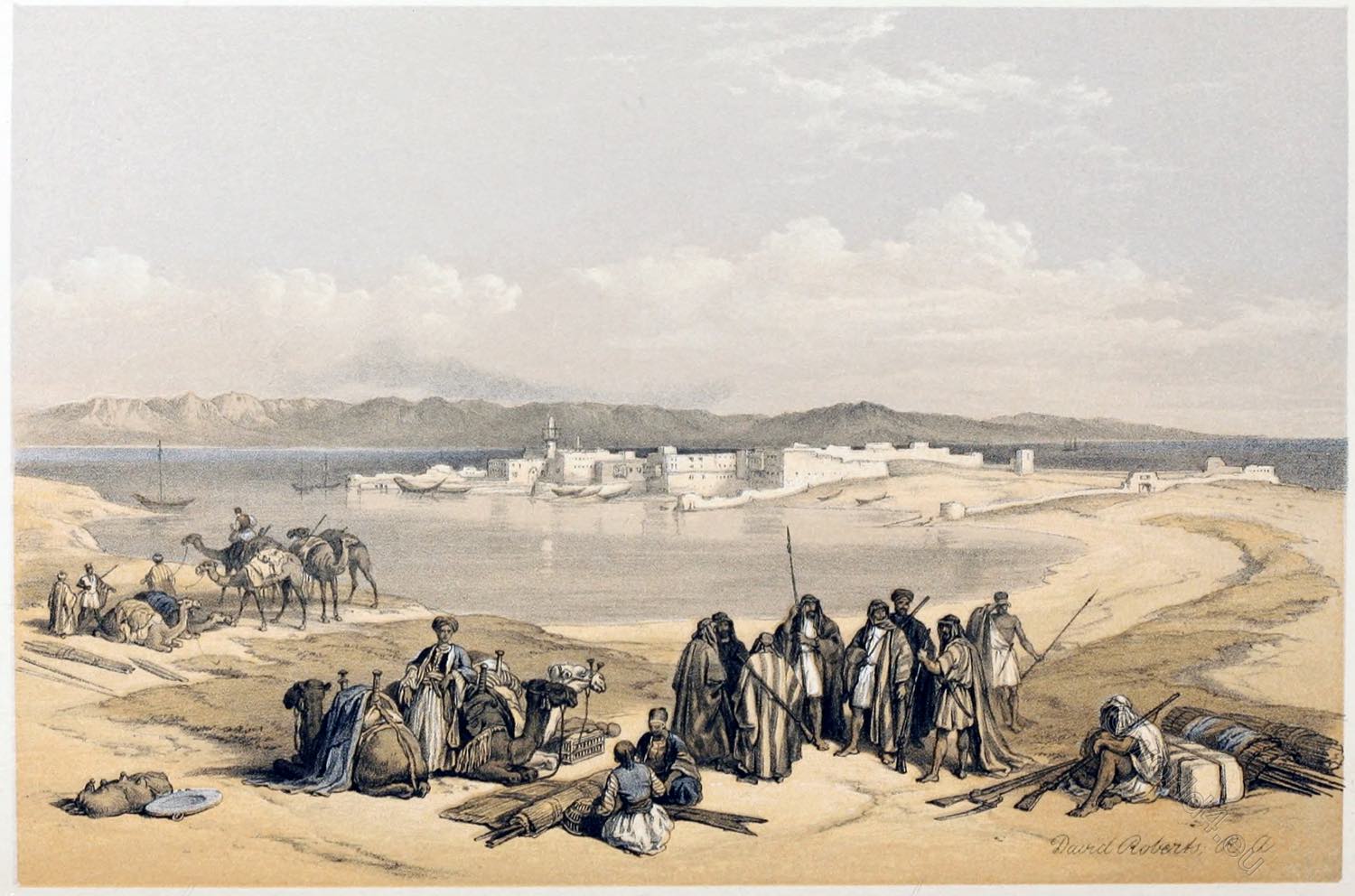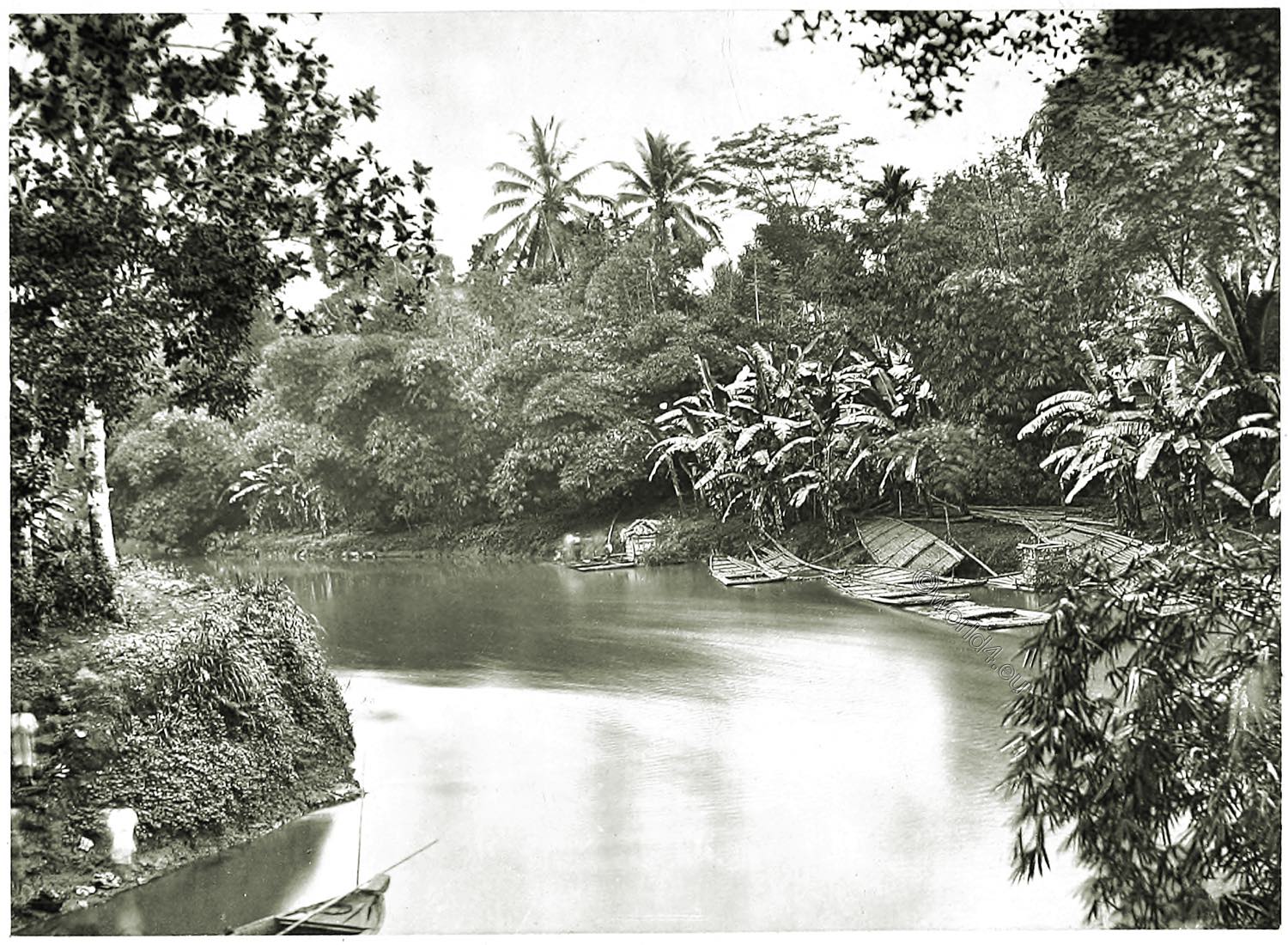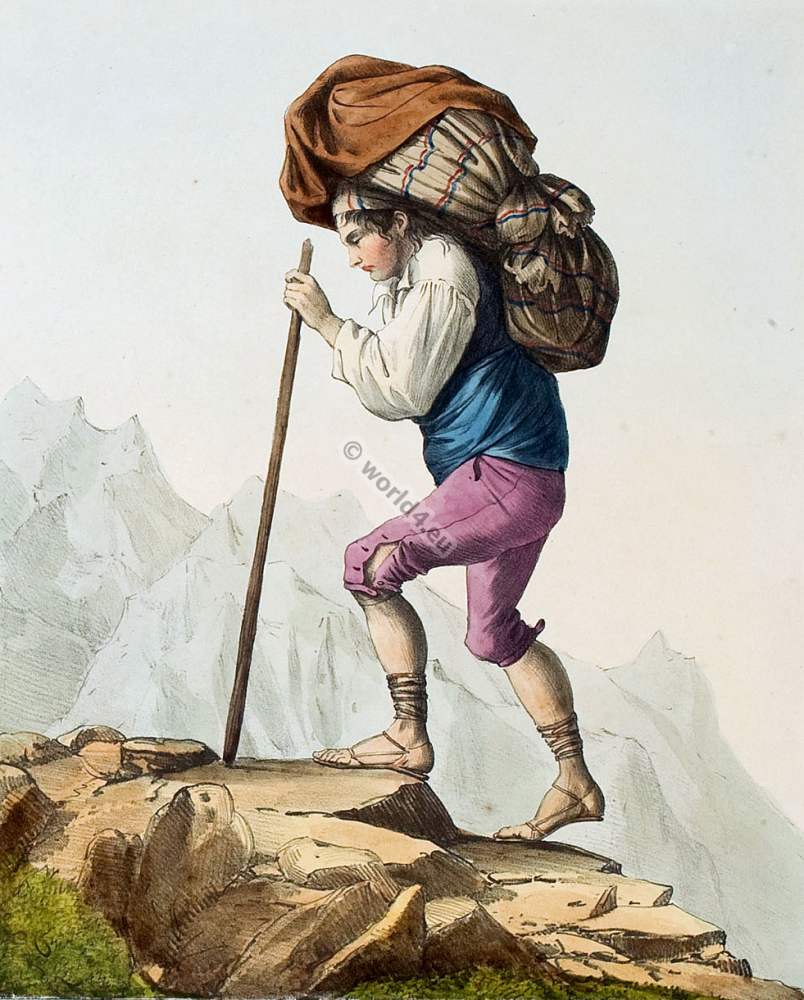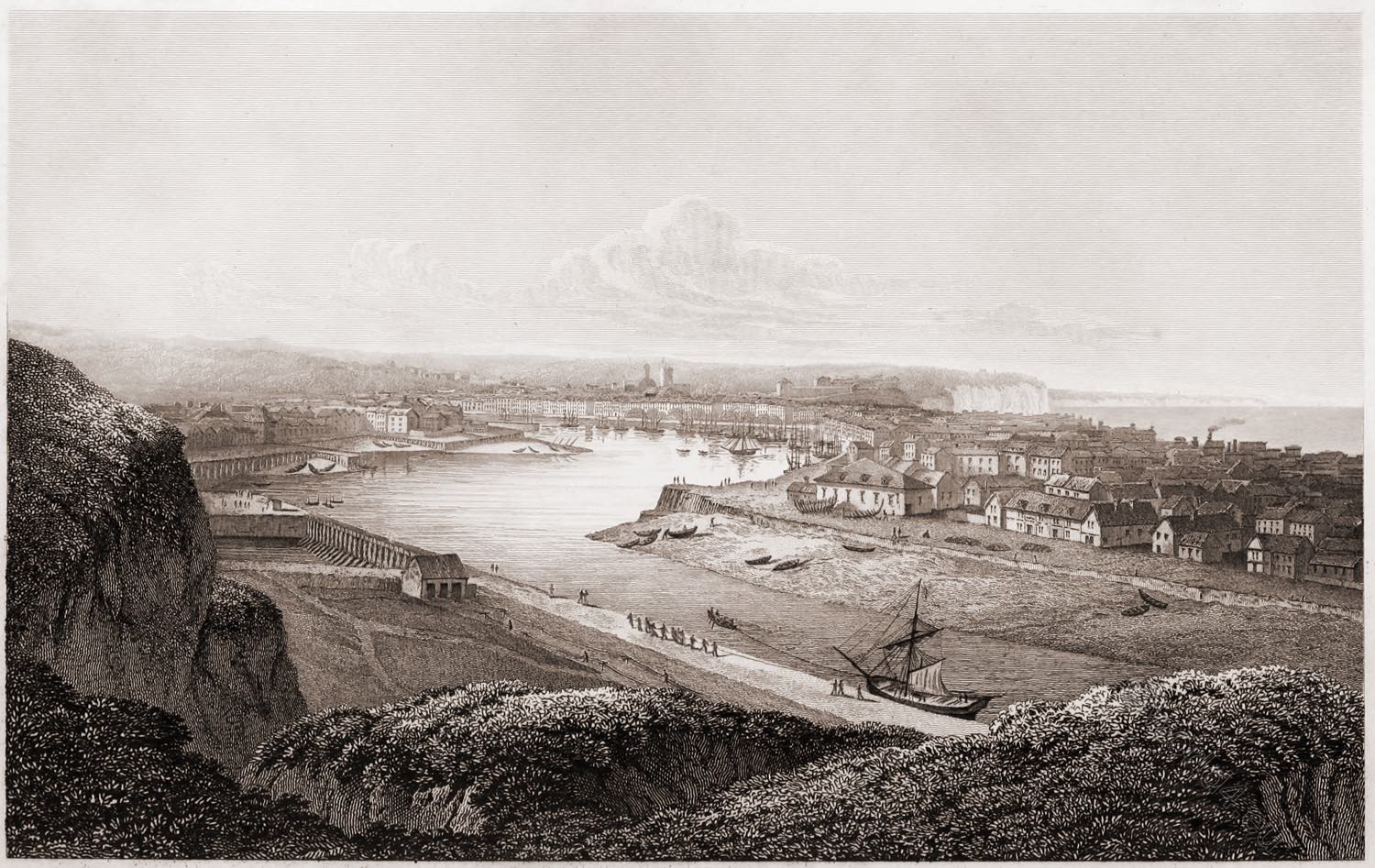The Port of Suez stands at the mouth of the canal which formerly united the Red Sea with the Mediterranean. The old walls of Suez, and the remains which are still left of its harbor, are constructed of fossil shells, testimonies of the deluge.

THE RED SEA, AND THE PORT OF SUEZ.
Drawn by J. M. W. Turner, from a Sketch by J. G. Wilkinson, Esq.
“He rebuked the Red Sea also, and it was dried up.” Psalm evi. 9. Exodus, xiv. 21.
The Red Sea separates Egypt from Arabia. The name, in Hebrew, signifies the “Weedy Sea,” or the “Sea of Weeds,” which appellation it still retains in the Coptic language. It is thus denominated, according to some authors, from the variety of sea-weeds which are said to be visible at low water; but Mr. Bruce, who had examined its whole extent, states that he never observed a single weed in it.
He further remarks, that a narrow gulf, under the immediate influence of monsoons blowing from contrary points during six months in each year, would be too much agitated to produce such vegetables, which are seldom found but in stagnant waters, and still more rarely — if ever — found in salt waters.
He is of opinion that this sea takes its name from the large trees or plants of white coral, which bear a perfect resemblance to plants on land. We derive the name “Red Sea” from the Greeks. Most probably this sea was anciently called the “Sea of Edom,” from the neighboring coast; and as Edom signifies red in Hebrew, the Greeks, not understanding the meaning of the appellation, translated it (as we have done after them) the Red Sea.
This sea is memorable for the miraculous passage over it by the Israelites on their departure from Egypt. They broke up from Rameses in the land of Goshen about the middle of April, and journeyed southwards below Suez; when, by means of a strong north-east wind, the Almighty drove out the waters of the sea in such a way, that the Israelites passed over the bed of it on dry ground, while the Egyptians who attempted to follow them were drowned by the returning waters.
Various ancient traditions among the heathen historians attest the reality of the miraculous passage of the Red Sea by the Israelites; to which we may add, that it is manifest from the text of Moses and of other sacred authors, who have mentioned this miraculous passage, that no other account can be supported, but that which supposes the Hebrews to cross the sea from shore to shore, in a vast space of dry ground, which was left void by the waters at their retiring. (Exod. xiv.)
To omit the numerous allusions in the book of Psalms, Isaiah says, God divided the waves before his people, and that he conducted them through the bottom of the abyss, as a horse is led through the midst of a field. (Isa. Ixiii. 11, &c.) Habakkuk (iii. 15.) says, that the Lord made himself a road, to drive his chariot and horses across the sea, through the heap of great waters. Lastly, in the apocryphal book of Wisdom (xix. 7, 8. x. 17, 18.) we read, that the dry land appeared all on a sudden, in a place where water stood before; that a free passage was opened in a moment through the midst of the Red Sea; and that a green field was seen in the midst of the deep.
The Port of Suez stands at the mouth of the canal which formerly united the Red Sea with the Mediterranean, (marked, on the left of our engraving, by a line of stones in the water, which probably are the remains of ancient piers or masonry) and upon the northern point of the Red Sea, on a tongue of land, which some commentators have supposed to be “the tongue of the Egyptian Sea” mentioned in Isa. xi. 15., in which place there is an evident allusion to the miraculous passage of the Israelites.
The sea runs up nearly to the low wall surrounding the town, which is seen on the right of the same engraving: it is tolerable even as a Turkish town; and, were it in other hands, it would be delightful. There is a large square, and there is an attempt at regularity of building; and its situation is described as being beautiful. The old walls of Suez, and the remains which are still left of its harbor, are constructed of fossil shells, testimonies of the deluge.
“The Red Sea is about fifteen hundred miles from one extremity to the other: it is visited by a few European vessels, which trade principally to Mocha. The pasha of Egypt maintains a small fleet upon it, for the passage and protection of his troops; and the vessels of the bordering countries are seen skimming along in all directions, laden deep with passengers.
The coasts are lined with coral, sometimes of a most beautiful construction; and when the day is calm, or the night is dark and still, the mariner might think himself transported to some enchanted land, the water is so clear, the coruscations of light are so radiant, and the coral beneath so extensively ramified. But the coasting vessels are often, from the same cause, in extreme danger; and though they are furnished with a false keel, this is not always proof against the violent shocks they have to bear.”
The vessel represented in the foreground of our engraving is of the kind peculiar to the Red Sea, called a Dao; and is, perhaps, of the same shape and fashion as those which were launched by Solomon at “Ezion-geber, which is beside Eloth, on the shore of the Red Sea” (2 Kings, ix. 26.), and afterwards by Jehoshaphat, to trade with Ophir, whose vessels, however, were wrecked at Ezion-geber. (2 Kings, xxii. 4-8.)
The materials of these ships were transported overland from Gaza, having been originally brought from Mount Lebanon. This is a common occurrence at the present day on the shores of the Red Sea, where no tree grows. M. Laborde mentions that scarcely a year elapses in which the timbers of vessels may not be seen passing, in single pieces, through the streets of Suez, on their way to the shore, in order to be put together and launched.
*) Dr. Shaw’s Travels (Shaw, Thomas, 1694-1751), vol. ii. pp. 92—104.329. Carrie’s Letters, p. 175. Bruce’s Travels, vol. ii. p. 18S. Horne’s Introduction to the Scriptures, vol. iii. pp. 612, 613. Sir Frederick Henniker’s (1793-1825) Notes during a Visit to Egypt, &c. pp. 216, 217. Hardy’s Notices of the Holy Land, pp. 20, 21.
Source: Landscape Illustrations of the Bible, consisting of views of the most remarkable places mentioned in the Old and New Testaments, from original sketches taken on the spot engraved by W. and E. Finden, by Thomas Hartwell Horne (1780-1862), William Finden (1787-1852), Edward Francis Finden (1791-1857), Joseph Mallord William Turner (1775-1851), Bartolomé de las Casas (1474-1566). London: John Murray: Sold also by Charles Tilt, 1836.
Related
Discover more from World4 Costume Culture History
Subscribe to get the latest posts sent to your email.






